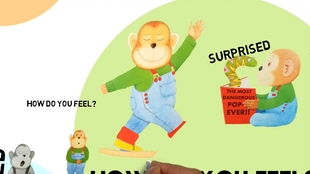
How Does Bed Bug Bites Look?
Bed bug bites can be quite unsettling, especially when you’re not sure what’s causing the red, itchy welts on your skin. Understanding the appearance of bed bug bites can help you identify them and take appropriate measures to eliminate these pesky pests from your home. Let’s delve into the various aspects of bed bug bites to give you a comprehensive understanding.
What Are Bed Bug Bites?
 Bed bug bites are the result of bed bugs feeding on human blood. These tiny, reddish-brown insects are nocturnal and typically feed on their hosts while they are sleeping. When bed bugs bite, they inject an anesthetic and an anticoagulant into the skin to prevent the host from feeling the bite and to keep the blood flowing. This is why bed bug bites often go unnoticed until the next morning.
Bed bug bites are the result of bed bugs feeding on human blood. These tiny, reddish-brown insects are nocturnal and typically feed on their hosts while they are sleeping. When bed bugs bite, they inject an anesthetic and an anticoagulant into the skin to prevent the host from feeling the bite and to keep the blood flowing. This is why bed bug bites often go unnoticed until the next morning.
Appearance of Bed Bug Bites
 Bed bug bites can vary in appearance from person to person, depending on the individual’s sensitivity to the bites and their immune response. Here are some common characteristics of bed bug bites:
Bed bug bites can vary in appearance from person to person, depending on the individual’s sensitivity to the bites and their immune response. Here are some common characteristics of bed bug bites:
1. Red, Itchy Bumps
Bed bug bites often appear as small, red, itchy bumps on the skin. These bumps are usually found in clusters or lines, which can be a clue to their bed bug origin. The bites may be scattered or concentrated in certain areas, such as the arms, legs, back, or neck.
2. Swelling and Redness
In some cases, bed bug bites may cause swelling and redness around the bite area. This is a sign of an allergic reaction to the bed bug’s saliva, which contains allergens that can cause irritation and inflammation.
3. Welts
Bed bug bites can also form welts, which are raised, inflamed areas on the skin. These welts may be larger than the actual bite and can be quite itchy. In some cases, welts may be accompanied by a burning or stinging sensation.
4. Scabs
If the bites are scratched excessively, they may develop scabs. These scabs can be a sign of infection, so it’s important to keep the bite area clean and avoid scratching.
Table: Comparison of Bed Bug Bites and Other Bug Bites

| Feature | Bed Bug Bites | Other Bug Bites |
|---|---|---|
| Appearance | Small, red, itchy bumps in clusters or lines | Varies, often larger and more painful |
| Location | Arms, legs, back, neck, or other exposed areas | Varies, often on areas exposed to the bug |
| Itching | Severe, can last for several days | Varies, can be mild to severe |
| Swelling and Redness | Common, can be a sign of allergic reaction | Varies, can be mild to severe |
How to Identify Bed Bug Bites
Identifying bed bug bites can be challenging, especially if you’ve never encountered them before. Here are some tips to help you distinguish bed bug bites from other types of bug bites:
1. Look for Clusters or Lines
Bed bug bites often appear in clusters or lines, which can be a significant clue to their bed bug origin.
2. Consider the Time of Year
Bed bugs are most active during the warmer months, so if you’re experiencing bites during this time, it’s more likely that they are bed bug bites.
3. Check for Bed Bugs
Inspect your sleeping area, furniture, and other potential hiding spots for bed bugs. Bed bugs are small but can be seen with the naked eye, especially if you know what to look for.
4. Consult a Professional
If you’re unsure whether the bites are from bed bugs or another source, it’s best to consult a professional pest control expert for an accurate diagnosis.
Preventing Bed Bug Bites
Preventing bed bug bites is crucial, especially if you’re traveling or staying in a new place. Here are some tips to help you avoid bed bugs:
1. Inspect Your Accommodations






